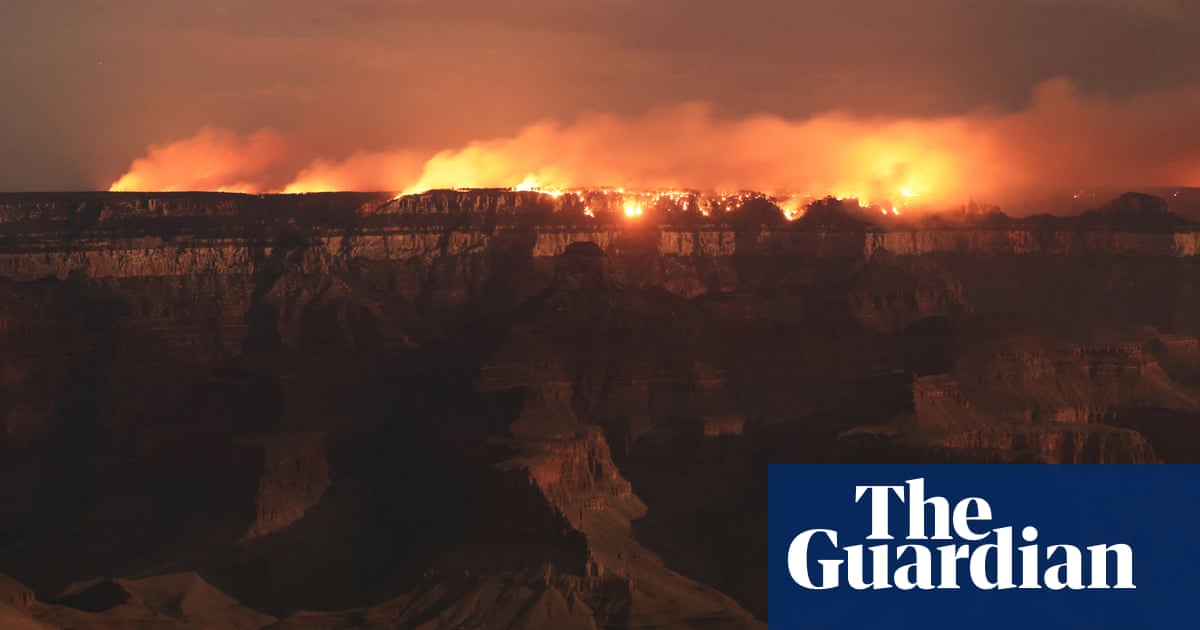Grand Canyon Wildfire Becomes Megafire, Creates Own Weather Systems
Wildfires in the US West, including a megafire near the Grand Canyon, have destroyed the historic lodge and over 70 structures, burning 164 square miles and creating erratic weather.
Subscribe to unlock this story
We really don't like cutting you off, but you've reached your monthly limit. At just $5/month, subscriptions are how we keep this project going. Start your free 7-day trial today!
Get StartedHave an account? Sign in
Overview
- A significant wildfire near the Grand Canyon has escalated into a megafire, causing extensive destruction including the historic Grand Canyon Lodge and at least 70 other structures.
- This Grand Canyon megafire is one of two major wildfires currently active in the US West, collectively burning over 164 square miles with low containment levels.
- The intense heat from these wildfires is generating pyrocumulus clouds, which can reach heights of at least 25,000 feet, creating their own localized and erratic weather systems.
- These erratic weather systems, fueled by the pyrocumulus clouds, pose significant challenges to firefighting efforts, making containment difficult and unpredictable for crews on the ground.
- The ongoing battle against these large-scale wildfires in the US West highlights the destructive power of such blazes and the complex environmental factors influencing their behavior.
Report issue

Read both sides in 5 minutes each day
Analysis
Center-leaning sources provide a factual and objective account of the Dragon Bravo Fire, focusing on its scale, impact, and current conditions. They prioritize official data and expert definitions, avoiding sensationalism or speculative language. The coverage emphasizes the fire's status as a 'megafire' based on acreage and its historical significance, alongside critical weather updates.
Articles (3)
Center (1)
FAQ
The Grand Canyon wildfire known as the Dragon Bravo Fire was ignited by a lightning strike on July 4, 2025, and rapidly expanded due to changing fire conditions and abundant fuel from trees and brush, reaching megafire status by burning over 100,000 acres.
As of early August 2025, the Dragon Bravo Fire has burned approximately 111,970 acres (about 175 square miles) and is only 9% contained, indicating ongoing challenges in controlling the blaze.
The wildfire severely damaged the historic Grand Canyon Lodge, the Grand Canyon Visitor's Center, and destroyed at least 70 structures within the park, prompting the closure of the Grand Canyon's North Rim for the remainder of the 2025 season.
The intense heat from the wildfire generates pyrocumulus clouds that can reach heights of at least 25,000 feet, producing erratic and localized weather patterns that complicate firefighting efforts by creating unpredictable fire behavior and challenging conditions on the ground.
Firefighters anticipated slightly improved conditions with relative humidity increasing to 15-20%, the highest in eight days, which might aid containment; however, overall extreme fire conditions with abundant fuel and previous burn scars continue to fuel the fire's growth.
History
- This story does not have any previous versions.


